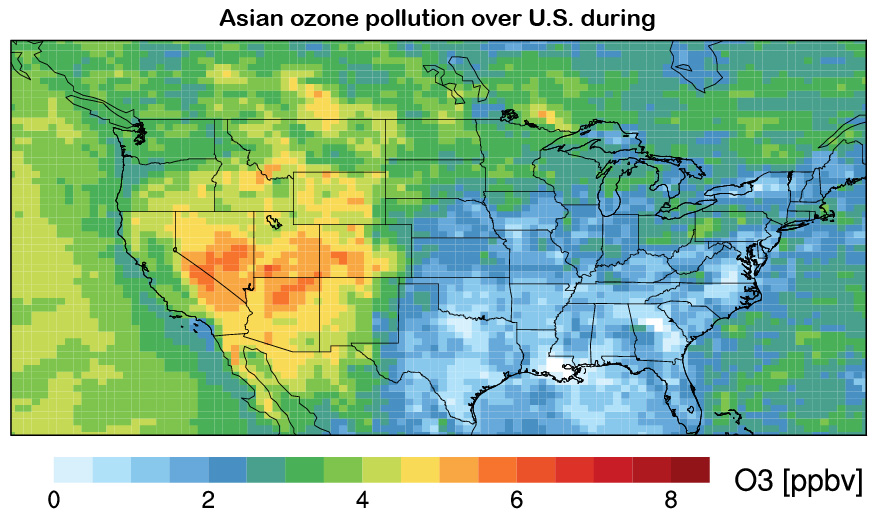When we talk about ozone pollution in Utah, we usually think of wintertime ozone in the Uinta Basin and summertime ozone along the Wasatch Front. What we don’t always take into account is the global nature of ozone; what we often view as a localized problem actually comes from a combination of regional, national and international pollution sources. That’s why the Division of Air Quality (DAQ) is working with other states to learn more about the ways ozone moves from place to place so we can find ways reduce its impacts on our air quality.
Ozone transport is the term we use to describe the movement of ozone from one area to another. DAQ recently invited Tom Moore, Air Quality Program Manager of the Western Regional Air Partnership (WRAP), to talk with representatives from our local health departments, tribes, federal land managers and DAQ scientists about the emission sources that contribute to regional ozone pollution. WRAP’s West-wide Jumpstart Air Quality Monitoring Study (WestJumpAQMS) is a massive effort to model air emissions and apportion the sources of ozone that impact air quality in the western United States.

Ozone transport is a major contributor to background ozone levels in Utah. Background ozone—the ozone in the air that isn’t attributable to local manmade (anthropogenic) sources—comes from a number of places:
- Intercontinental transport of ozone and nitrogen oxides (NOx) from Asia contributes up to 20 percent of the West’s total ozone concentrations and it has been shown to be growing by 0.5–1 parts per billion (ppb) per year.
- Wildfires, which are on the rise in the western states, increase ozone levels.
- Stratospheric intrusions—that’s when the good ozone in the upper atmosphere pushes downward into the atmospheric layer just above the earth’s surface—can increase ground-level ozone concentrations by 20–40 ppb.
- Ozone from western states often travels to downwind neighbors.
- Volatile organic compounds (VOCs) from biogenic sources such as trees boost the formation of ozone.
That’s why remote areas in southern Utah show elevated background ozone concentrations, even though they are located far away from the typical urban sources of ozone.

The Environmental Protection Agency (EPA) plans to tighten the ozone health standard from the current level of 75 ppb over an 8-hour period to a more protective level between 60–70 ppb. In Utah, our background ozone levels alone can range from 60 to 70 ppb, so we are concerned about how we can protect the health of our residents and meet these stricter standards.
Working together with other states on regional air quality planning is critical. By pooling our knowledge and planning efforts through WRAP and using the information from the WestJumpAQMS, we can better understand and address the ozone that’s making its way into Utah from sources that aren’t directly under our regulatory control.
If you’d like to learn more about ozone in the West, check out the Ozone Workshop materials posted on DAQ’s home page under News and Announcements, or visit WRAP’s ozone webpage.

Deputy Director,
Utah Division of Air Quality
I have a degree in meteorology and work for the Utah Division of Air Quality, where I am currently the Deputy Director. I serve on the WRAP Board of Directors that oversees the WestJumpAQMS project. When I’m not tracking air pollution, I spend my time raising Russian thistle on my ranch in Boulder, Utah.
